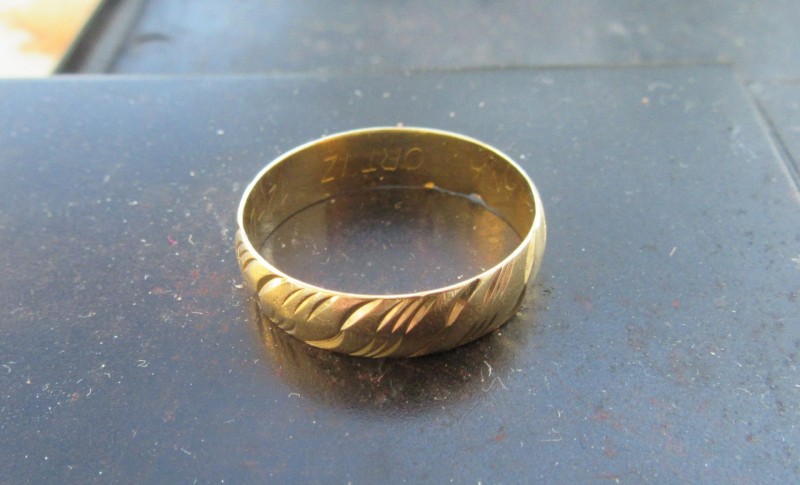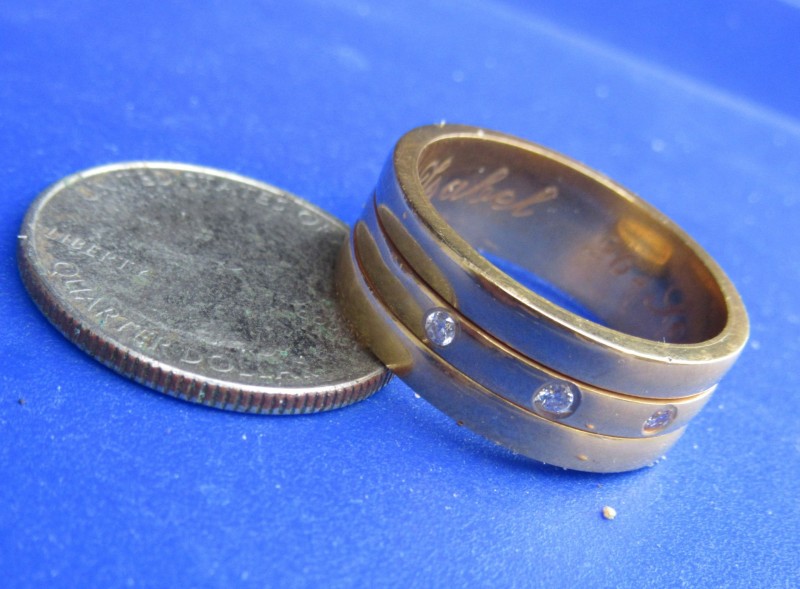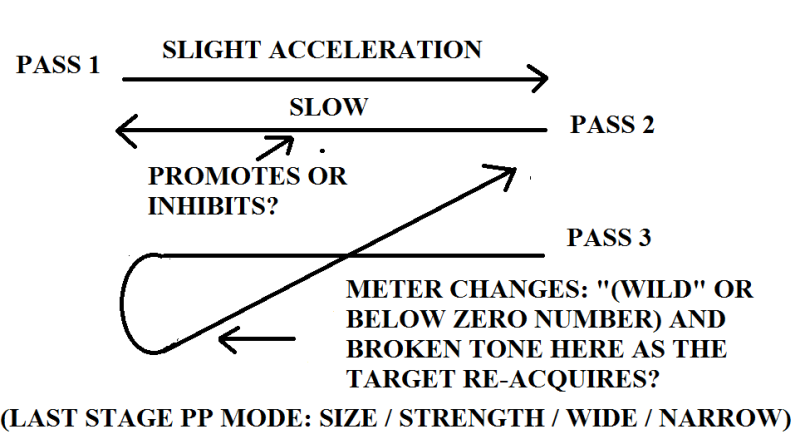-
Posts
514 -
Joined
-
Last visited
Content Type
Forums
Detector Prospector Home
Detector Database
Downloads
Everything posted by cjc
-
CONNECTING the detector to previous paired ML105. The headphones will automatically connect with the last-paired device. If connection is successful, the LED on the headphones will flash blue once every 3 seconds. 1. Power on the ML105 Headphones by pressing the Multi-Function Button (MFB) - release the MFB once the Headphones power on as continuing to hold will clear the previous pairing information and start a new Pairing process. >> the LED on the ML105 should be flashing Blue 3 times every 1 second. This indicates that the Headphones have been previously paired with a device and is looking for that device to connect to it. If the ML105 Headphone LED is flashing Blue / Red, the Headphones are in Pairing Mode. There are Two causes of this: 1.a. Multi-Function Button has been pressed too long when powering on. 1.b. The Headphones do not have a previous paired device in memory. 2. Enable Wireless Audio on the detector by short-pressing the Wireless Button on the side of the detector. A short-press is approximately less than 1 second. >> the Wireless Icon on the detector will flash approximately once every second. This indicates that a previous pairing has been performed and the detector is seeking to establish a connection with the device. If the Wireless Icon on the detector is flashing rapidly (approximately three times every one second), the Detector is in Pairing Mode. There are Two causes of this: 2.a. Detector Wireless Button has been pressed too long (2 seconds or longer). 2.b. The detector does not have a previous paired device in memory. If you are encountering 1.b or 2.b above and have not attempted to pair your detector or headphones to any other devices since the last time used, please let us know as it may indicate something we need to investigate further. Other Notes: Connection is only possible with ONE previously Paired device at a time. MANTICORE will only attempt to Connect to the LAST connected device. ML105 will only attempt to Connect to the LAST connected device. In other words: If you Pair the detector with set of Headphones A and then Pair the detector to another set of Headphones B, the connection information of Headphones A is forgotten by the detector and the detector will only look for Headphones B to Connect with. If you Pair the Headphones with Detector A and then Pair the Headphones with another Detector B, the connection information of Detector A is forgotten by the ML105 Headphones and the Headphones will only look for Detector B to Connect with. ML105 Led Status + Alternating Blue / Red = Pairing mode + Flash Blue 1 time every 3 seconds = Connected + Flash Blue 3 times every 1 second = Not connected + Solid Red = Charging Detector Wireless Icon Status + Rapid flashing (3 times per second) = Detector is attempting to PAIR. + Solid on = Detector is connected to wireless headphones (accompanied by the Headphones icon being solid). + Slow flashing (one time per second) = The detector is attempting to re-connect with previously-paired wireless headphones.
-
na, not that old, but deep though--Toms settings are no joke... cjc
-
It's 18k, 4.4 gr. Running Toms settings with a litte disc added to smooth it out. This detector is processing very well--very clean. Also the combo of segmented and all tones is a nice gold I D feature--any "transitory" type signals are obvious. I've spent my last day digging rusted foreign coins...Great machine! cjc
-

Manticore Beach Hunters - Need Some Help
cjc replied to schoolofhardNox's topic in Minelab Manticore Forum
Seems to me like the machine is GB'ing the overall environment okay but you are hitting peaks that are noisy. You might try a manual overtune. pg 54. cjc -

I Think The Manticore Falls Short On Saving Programs
cjc replied to khouse's topic in Minelab Manticore Forum
well said, and with Neil Jones taking on creating an iron killer "(Freestyle)" to task it would be great to do some side by side comparrisons but no go. Your favorite is the same as the one you nav to....sombody correct me--please...say it ain't so... cjc -

The Best Metal Detector Out There
cjc replied to Chase Goldman's topic in Metal Detector Advice & Comparisons
sorry about the hijack--an irresistable question...😆 ...may have even heard my music coming in..."...four score and seven years ago..." cjc -

The Best Metal Detector Out There
cjc replied to Chase Goldman's topic in Metal Detector Advice & Comparisons
These are things that I've learned over time and put them into the book I was writing at the time. My buddy Joe B bought every book I had at one point--not a bad idea for exactly that reason. He and I have that in common--looking to learn as mich as possible just in case you need it. Not surprising that he is at the top. My first NOX book has a lot of solid basics as does the one on the Anfibio. It's almost like the specific detector info is secondary compared to the importance of this kind of skill set. Signal balancing is critical more so with these hair trigger, high powered machines that are coming out. Most wouldn't even be able to give a definition besides turning the Sensitivity down...thats why I dug out the bottom illustration. Even that is way incomplete. Just got a big ring from an iron infested section that other "gonzo" types hunt with the same machine daily--the difference was that running two tone with a moderate, balanced signal I could hear and tune better. cjc -

The Best Metal Detector Out There
cjc replied to Chase Goldman's topic in Metal Detector Advice & Comparisons
Thanks JCR. Those are two good ones. I especially like the Anfibio as a vehicle with which to learn the above skills. Its raw audio and "work horse" power are just great to get the hang of signal balancing and any hearing what's what. You would recognize the bottom illusttration from the Legend book This is why it concerns me when I get people asking "what version is your book about" when it's those basics and understanding how they relate to the overall platform ofa machine that actually matter. Mostt of these upgrades are just preferences by standard. Glad they have helped you. cjc -

The Best Metal Detector Out There
cjc replied to Chase Goldman's topic in Metal Detector Advice & Comparisons
Way back in 79 when I was a lad, the first thing we were taught was to "discriminate in all metal." What this means is to use all metal mode to examin your targets to see whether they were a/ wide responding iron or b/ sharp, narrow non-ferrous. What followed from this is 'correlation\' where you are using this information to begin to look for "sets" of target information. So you are correlating target size, shape, depth (meter) and strength as the tone would indicate. Each one of these verifies the others. I call this the "in keeping" method in that when one of these target features is "off" there is a problem. This combines with your basic detector skills ie knowing how far somethign is from the coil by the tone. Coil control target testing is also part of it. Not just turning sideways on a signal but knowing what angle to test at and when to release ithe target from the coil's infleuence (long cross) or keep in in (short cross) to get more information. How you do this progressively is called 'laddered' testing. At the same time none of this may be necessary, but if you don't know how to do any of it you are prone to this over-reliance on tech that I see everywhere. With basic skills a machine like the Manticore becomes much more effective. Basic skills also involve recognising basic signal type differences--how blended with the ground something is--that is being aware ofthe informaton to be had from the relationship between ground and target. Basic skills also involve signal balancing and the host of gains to be gotten from understanding what this means and how to accomplish it with a given machine. It's laughable for me to watch many of these YouTube "personalities" considering themselves skilled but not using any of these simple skills that would givee them ten times the accuracy and conclusiveness. I see hunters with some of these skills--but not all of them. At the same time, anyone can go out and dig a high tone / meter reading--but to search for gold in diffficult environments is another skill set altogether. There are no shortcuts, technical or otherwise. The "ears only" techniques that many would like to have still derive from these basic skills and the theory behind them. Its a shame -dealers used to teach the new hunter a few things but now its the YouTube "blind leading the bllind." If you run a NOX all three of my NOX book would give one a pretty good grounding. There are a lot of reviews at my site from hunters who have been at it for a while but lacked these basics--"lightbulb" moments lol. Back then we learned to walk first. ...NURSE...!!! cjc clivesgoldpage.com -

The Best Metal Detector Out There
cjc replied to Chase Goldman's topic in Metal Detector Advice & Comparisons
Lots of "technicians" not enough basic skills. I see so many of these YouTube vidddies of guys digging obvious junk. The things I was taught work on all detectors all the time. "Ask not what your detector can do for you..." 😆 cjc -
I tried Tom's set up in fresh it was prettty impressive. cjc
-
Look up CoAxeSeal, its made for exactly that type of thing and works very well to protect contact surfaces from corrosion. cjc
-
This is a good set up to sharpen your coil testing (varied and cross sweep) skills. Tom does run some (4-upper) FE Limits. Prospecting audio mode overall is very quick and sharp and when you make changes to the Rec Spd, or FE Limits for example you can really hear your changes. Its a very good way to learn to run a balanced signal instead of depending on any presets. I ran this mode in fresh last weekend and got a pitted (haloed) quarter down 17" maybe more. It's quite valuable to find a "deep standard" that can be adapted to other applications. Prospecting mode on the NOX was actually no deeper than Park 2 but it was fast and lively obviously better in black sand. Found a lot of stuff in dense shoreline junk with it's accurate audio. I did this by putting in a small reject block that made it "stutter" on caps so I coud head for the worst areas while others were bogged down digging them all. cjc
-
A good way to look at it is that anything off the center line is more like the ground--more magnetic, more corroded.. Some targets like many rusted caps (20/21)are so strong in both top and bottom iron ranges that you get what's called a "cross feed"-a tone that mimics something that would respond in the center. However there will be no middle line painting--just dots top and bottom. Hate to say it but basic skills willl reveal a lot of these--just going to a cross wise coil pass will show big changes in the graph and meter. You just can't put a ot of power into the ground and not have these 'bleeds". The graph should confirm other info--not be a stand alone substitute for basic skills. Where you hear a flat, clipped or broken tone--this will usually coincide with a graph with top and bottom edge painting. cjc
-
Can't believe how hard this detector is to pair. Im about 1 of 5 now. Do I need a Farraday Cage? Just does that double beep then nothing... cjc
-

Manticore And Emi (and The Magic Word -- Depth)
cjc replied to GB_Amateur's topic in Minelab Manticore Forum
Ya, many dont understand that all multi FQ machines will give a smooth T/H no matter what. Just that way up at 30 nothing is jumping though. The better the processing, the smoother--conditions notwithstanding. cjc -

Manticore And Emi (and The Magic Word -- Depth)
cjc replied to GB_Amateur's topic in Minelab Manticore Forum
This is a detector with a heavily processed signal--period. This creates a delicate balance in that while this processing is augmented with a lot of power--physics are physics. So with the Manticore, everything is there in the signal tone--EMI, proximity of targets, mineraliztion in the ground, sweep or REC SPD too fast--its like the signal is being crept up on by this wave of generalized interference--not just electrical EMI. This is reflected in how well targets sounds stand out. Try turning the machine on indoors at Sens 30. Listen to a few targets while greadually turning it down. As you reduce the Sens, the processing stops working against you--confounding the signal. Way down at say 15 you finally have a signal tone that is standing out from the background. Signal to noise is a big part of understtading this machine--like the NOX. However, the Manticore is a lot more refined in that even with a lot of noise--it's still going deep in kind of a faint tone way...The "I'll turn it up and learn to hear though everything" guys are not going to get far with this one--it needs to be run and listtened to in a balanced, measured way. Its not a loud, robust signal but it's a deep one. This is the processing--it's sampling at an extreme ratio- like the NOX it does not at all sound like its going deep but it is. Kind of funny the ads talking about all this power--but up past 25 you are already in trouble with the audio tightening up and clipping... Tip? Focus on peaked sounds. I can see that this machine will be challenging, but worth learning. cjc -
that's a good point, thanks! hadthe sense that it was indicating something about the target itself.... cjc
-
When I go over some targets in PP there's this intermittant noise. What the hell is that? Some kind of Ratchet limit warning? Used to be able to figure these things out...😆 cjc
-
I actually saw one YouTube dude going on about the interference problem of the Manticore as he swept the coil over patches of snow. He also had his screen protector slapped on sideways.....unreal... cjc
-
Tempting to say that the 900 is how M/L fixes a leak and gets you to pay--but it does have some nice touches. Seems that these days, everyone with a puffed out chest and a YouTube channel is a teacher (or even "Detexpert)"--basic skills and theory notwithstanding. Amazing how many of these guys have the slickest tech out in hand but still manage to dig spikes, odd flyspecks and massive, miss-shapen lumps of iron--like I said, basic skills notwithstanding. It also concerns me that Ml/L is so smittten with the tech of the Manticore that they don't think that anyone needs Sizing Pinpoint to tell whats what. (To me that's the bread and butter of becoming accurate any machine). Watching these YouTube experts, many do-- (if they had the basic target correlation skills to make use of it). There I've said it all...breathing heavy--gotta sit down--or lie down...or something...😆 cjc
-
That needs to go back. cjc
-
At first I thought he might be getting to the guts of this 50% more power claim, but my take is that even with the help Merrill has--he's in over his head in that this idea of power to the coil relating singularly to depth is an outdated one. The ground forms part of the signal and is separated by way of processing. That (power = depth) is not even true of a pulse, as Bill Lahr has repeatedly told me. With Multi IQ we have a tech that (by way of sophisticated processing) locks the ground and iron signal away from the detection signal. This is a feat of the amount of power going to the processer. So with this increase there are many other benefits anyhow--most important of which is the machine separating non--ferrous objects from the ground better. This is what a pulse does and the difference is incredible--on deep or shallow targets--they come out of (VLF) "nowhere." As well, the saturation that multiple frequences provide needs to be sorted out. This also falls to the sophistication and power of the processer being used. The CTX is still deeper than the EQX with or without Multi IQ--because it has that big heavy processor chugging away. I'm really liking the look and tech of this detector and won't be listening to any half-baked attempts to run it down. cjc
-
I would say this indicates a machine that performs bettter in-ground. cjc
-

Re/ AQ Threshold Pot Burnout
cjc replied to cjc's topic in First Texas - Bounty Hunter, Fisher & Teknetics
$85 CDN just to ship. Cut the box down this time--only $79... As good as these machines are--my two are not earning their keep because of these build flaws. cjc




